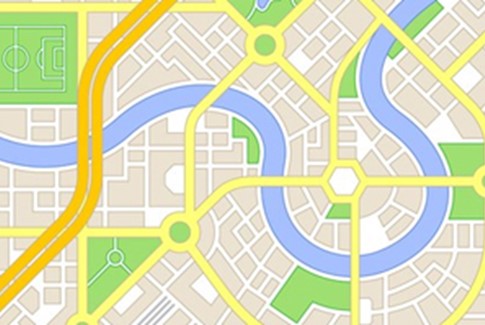What should I know about coated exterior timber cladding?
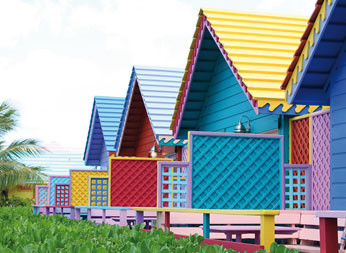
What does a coating do?
A high-quality coating enhances the performance and appearance of timber cladding by:
- Providing a wide range of aesthetic finishes.
- Offering protection against moisture ingress and improving water repellency.
- Minimising movement such as splitting, fissuring and distortion.
- Slowing down biological degradation.
- Improving resistance to UV (weathering) and chemical degradation (from cleaning).
Image courtesy of Impra Wood Protection
Best practice recommendations
Preferred method:
- TDCA recommends factory application as the preferred application method as it ensures consistent and measured coverage, even film thickness and coats all board faces resulting in superior and longer-lasting protection.
- Site care: Boards must be handled carefully during transport, storage, and installation to avoid damage to the finish.
Image courtesy of Timber Coaters
- If coating on site:
- Apply at least one coat to all four faces of each board before installation.
- Apply additional coats to the visible face as recommended.
- Follow the coating manufacturer’s guidance regarding number of coats and application method.
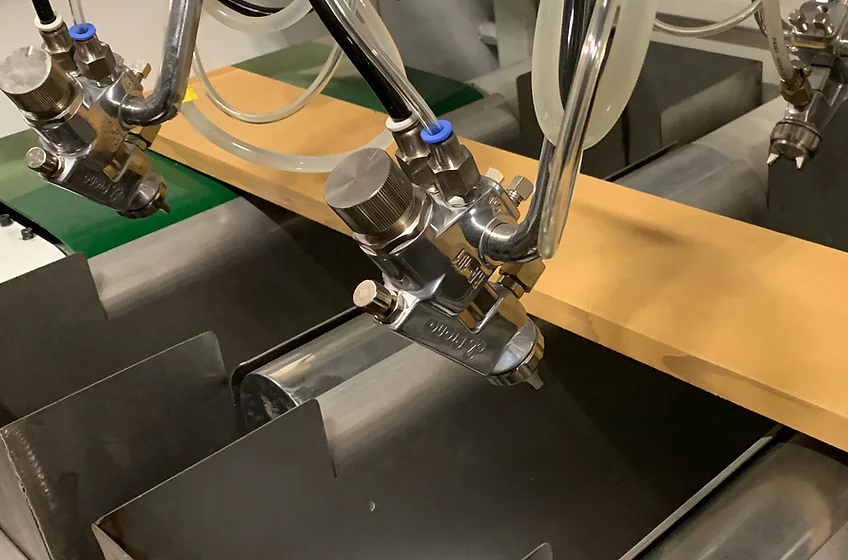
Choosing the right coating
Type of coating
- Use vapour/moisture permeable coatings – these are specially developed for external timber designed to accommodate natural movement.
- Choose low to medium build coatings (5 to 60 microns) rather than film-forming products which may trap moisture beneath and lead to failure.
- Low-build, high-vapour permeability coatings are ideal for overlapping profiles and typically resist weathering for up to 2 years.
- Medium-build, moderate-permeability coatings suit interlocking profiles like tongue and groove, typically resisting weathering for up to 3 - 4 years.
Understanding coating types: film-forming vs. non-film-forming
- Film-forming coatings build a layer on the surface of the timber.
- Non-film-forming coatings are absorbed into the timber rather than sitting on top.
- There are also semi-film-forming systems, which combine characteristics of both.
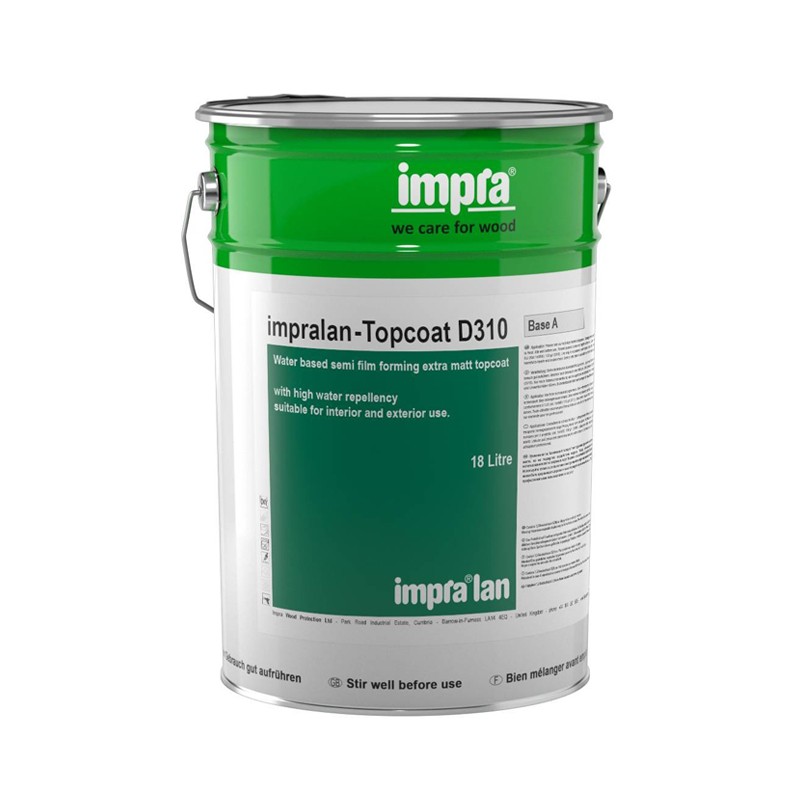
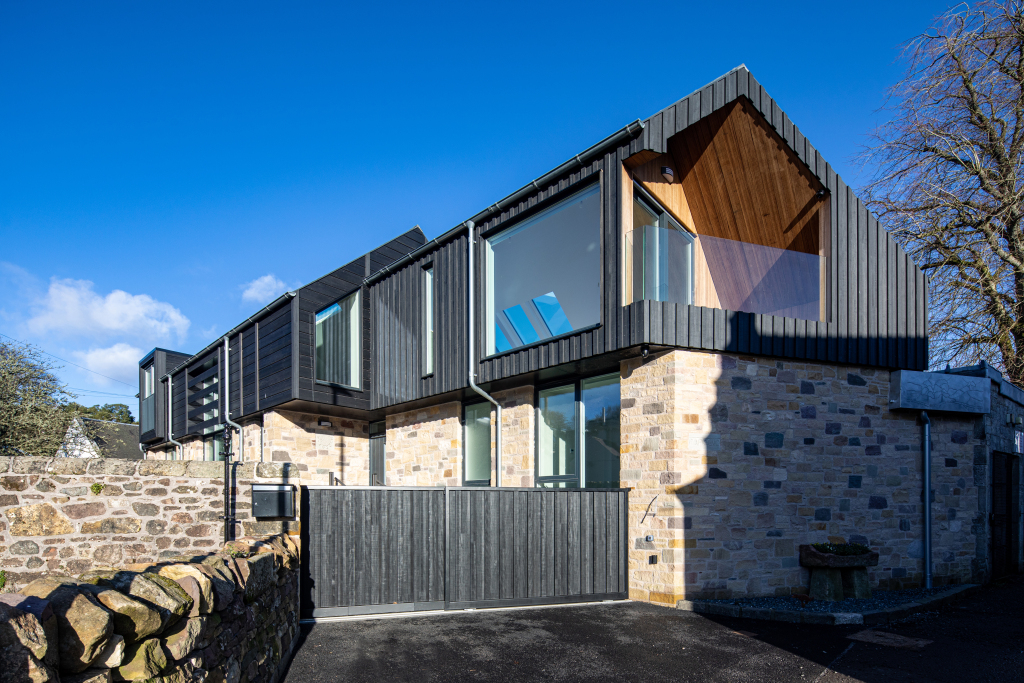
Dark colours – extra care required
- Dark finishes like black are increasingly popular for their modern, bold aesthetic.
- However, darker colours absorb more heat and can lead to very high surface temperatures in sunny weather, which can affect the coating's durability and increase maintenance needs.
- To combat this, some manufacturers offer cool pigment technology (e.g. Teknos AQUATOP 2600) which helps reflect heat and maintain coating performance. Cold pigments - Teknos
Image courtesy of Glenalmond Timber - Abodo
Preservative treatments
- Low durability softwoods like pine and spruce must be industrially treated to meet BS 8417 standards for durability.
- For specification purposes, coated external cladding typically falls under Use Class 3.1 - exposed to occasional wetting.
- There are two treatment type options for coated cladding.
- Where low-pressure preservatives (e.g. microemulsions) are used, applying and maintaining a coating is not optional - it’s critical for performance. This combination is essential to ensure it meets standards and durability expectations.
- Where maintenance is a concern, using a copper-organic preservative via high-pressure treatment offers a more robust solution.
- If boards are crosscut on site, the newly exposed ends must be treated with a suitable end grain wood preservative to maintain the integrity of protection.
Image courtesy of Impra Wood Protection
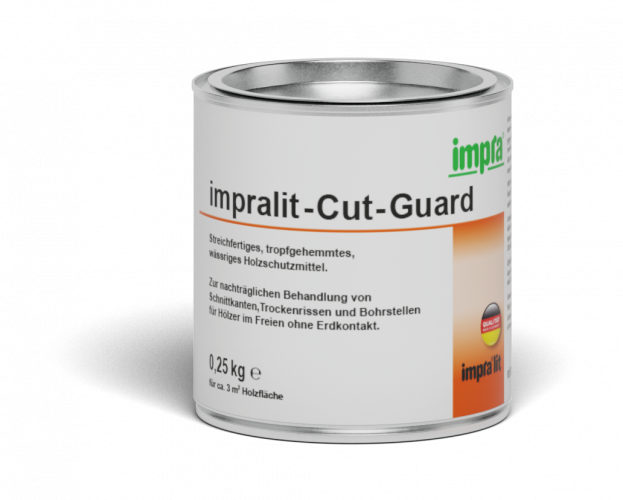
To summarise:
What works best?
- Factory-applied coatings with extended maintenance intervals offer the best long-term value.
- Moisture-permeable coatings are specifically developed for external use and are resistant to cracking, peeling, or blistering. They allow the wood to breath preventing moisture build-up under the surface
- Dimensionally stable timber types, such as Accoya® and Abodo®, reduces movement and significantly extends maintenance cycles.
- Sawn-face boards provide better coating adhesion than planed surfaces.
- Highly pigmented coatings offer superior UV resistance.
Key considerations for best performance
- Timber should be below 20% moisture content at time of coating – your supplier or coating manufacturer will advise.
- Use cladding boards with rounded arrises (3 mm radius) to improve coating durability (as recommended in BS 8605).
- Always confirm coating compatibility with any pre-applied products like flame retardants or preservatives.
- For weathered or previously installed wood, thorough cleaning or surface preparation will be required before re-coating.
- Not all hardwoods are suitable for coating – consult with your timber supplier before specifying.
- Follow manufacturer recommendations for both application and ongoing maintenance – prevention is better than cure.
Pay special attention to board ends
- The ends of timber boards are particularly vulnerable to moisture ingress.
- For added protection, some suppliers recommend sealing the end grain and any areas where fixings have been applied e.g. Sikkens Kodrin
Factory application
Timber Coaters LtdFactory applied products
Impra Wood ProtectionBrush applied coatings
Barrettine Products LtdWood preservative manufacturer
Impra Wood ProtectionSources of Guidance
- TDUK/TDCA Timber Cladding Handbook
- BS 8605: External Timber Cladding - Method of Specifying
- BS 8417: Preservation of Wood - Code of Practice
- WPA Code of Practice: Industrial Wood Preservation
TDCA publications / discounted BSI standards
Publications